News
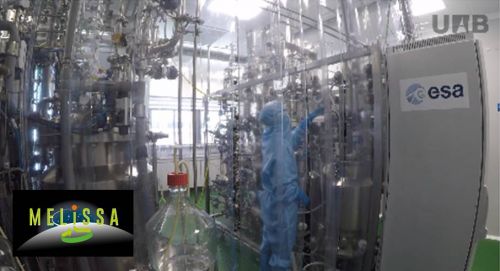
10/04/2019
10th Anniversary of the MELiSSA Pilot Plant: travelling to Mars is in progress near the Barcelona Synchrotron Park
10th Anniversary of the MELiSSA Pilot Plant: travelling to Mars is in progress near the Barcelona Synchrotron Park
The MELiSSA pilot plant from the European Space Agency (ESA), which is located in the engineering school of the Universitat Autònoma de Barcelona (UAB), the BSP strategic partner, works on a very ambitious and long-term project that celebrated its 10th anniversary last week.
During a round-trip voyage to Mars, a six-person crew would need about 30 tons of food, oxygen and water for the 1,000 days mission. This huge quantity would be drastically reduced if a closed loop system would recycle the CO2 exhaled and the waste produced by the crew in order to produce in return oxygen, water and food, etc.: this is the MELiSSA project.
This project started 30 years ago and is founded up to 60% by the ESA (5 million Euros per year). It involves 100 researchers from 30 organizations and 15 European countries. In this puzzle the UAB pilot plant, which was inaugurated in 2009, plays a central role. To be highlighted, the operation of three compartments of the MELiSSA Pilot Plant during a long term period under continuous and controlled operation was successfully achieved, demonstration of the scientific and technological capacities of the Consortium. These three compartments were a nitrification bioreactor, a microalgae photobioreactor and an animal isolator as a crew mock-up.
Let's see when humans can take the place!
During a round-trip voyage to Mars, a six-person crew would need about 30 tons of food, oxygen and water for the 1,000 days mission. This huge quantity would be drastically reduced if a closed loop system would recycle the CO2 exhaled and the waste produced by the crew in order to produce in return oxygen, water and food, etc.: this is the MELiSSA project.
This project started 30 years ago and is founded up to 60% by the ESA (5 million Euros per year). It involves 100 researchers from 30 organizations and 15 European countries. In this puzzle the UAB pilot plant, which was inaugurated in 2009, plays a central role. To be highlighted, the operation of three compartments of the MELiSSA Pilot Plant during a long term period under continuous and controlled operation was successfully achieved, demonstration of the scientific and technological capacities of the Consortium. These three compartments were a nitrification bioreactor, a microalgae photobioreactor and an animal isolator as a crew mock-up.
Let's see when humans can take the place!
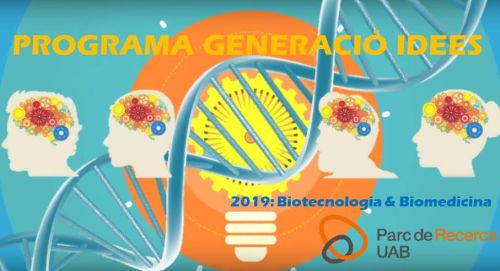
25/03/2019
Barcelona Synchrotron Park Sponsors the 9th Ideas Generation Program
Barcelona Synchrotron Park Sponsors the 9th Ideas Generation Program
The Ideas Generation Program carried out by PRUAB, the UAB university research park, is sponsored by the Barcelona Synchrotron Park (BSP). It is based on the collection of local companies’ technological challenges that are submitted to the UAB scientific community: every year, this program aims at offering companies the benefit of the UAB researchers’ wealth of creativity to get proposals for their innovation projects.
This program (video in Catalan here) is based on: 1) Collecting technology challenges posed by local companies from a given sector, 2) Inspiring solutions from the UAB scientific community, 3) Training researchers to help them make their proposal a reality (assessment to elaborate a business plan, create a start-up etc.), 4) Evaluating these projects by experts, 5) Rewarding the best projects.
Every year, challenges come from a given sector. Last year, for instance, the 8th program tackled the circular economy. This year, the 9th program deals with biotechnology and biomedicine sectors.
Everything starts on April 11 and concludes on June 27: Good luck!
More information here (in Catalan).
This program (video in Catalan here) is based on: 1) Collecting technology challenges posed by local companies from a given sector, 2) Inspiring solutions from the UAB scientific community, 3) Training researchers to help them make their proposal a reality (assessment to elaborate a business plan, create a start-up etc.), 4) Evaluating these projects by experts, 5) Rewarding the best projects.
Every year, challenges come from a given sector. Last year, for instance, the 8th program tackled the circular economy. This year, the 9th program deals with biotechnology and biomedicine sectors.
Everything starts on April 11 and concludes on June 27: Good luck!
More information here (in Catalan).
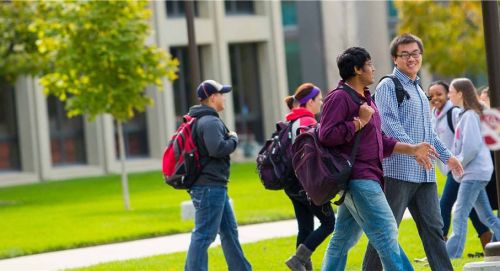
08/03/2019
The Barcelona Synchrotron Park aims to host a university residence
The Barcelona Synchrotron Park aims to host a university residence
In terms of its higher education offer, the Vallès region of the Barcelona Metropolitan Area is home to the UAB University, one of the best universities in Spain, and the prestigious business school ESADE. These two centres receive about 45,000 students.
The Barcelona Synchrotron Park (BSP), which is next to UAB and a few minutes away from ESADE, offers a strategically located and connected space for building a new university residence that would give students the opportunity to live in a green environment close to the leisure and cultural life of Barcelona.
Outside researchers who come to carry out experiments in Alba synchrotron or short or long-term stays in one of the many UAB or ESADE research centres and people visiting the companies set up in BSP are also an important potential for a future university residence.
For more information, download here the special report about the opportunity that BSP offers to invest in a university residence (leaflet here).
The Barcelona Synchrotron Park (BSP), which is next to UAB and a few minutes away from ESADE, offers a strategically located and connected space for building a new university residence that would give students the opportunity to live in a green environment close to the leisure and cultural life of Barcelona.
Outside researchers who come to carry out experiments in Alba synchrotron or short or long-term stays in one of the many UAB or ESADE research centres and people visiting the companies set up in BSP are also an important potential for a future university residence.
For more information, download here the special report about the opportunity that BSP offers to invest in a university residence (leaflet here).
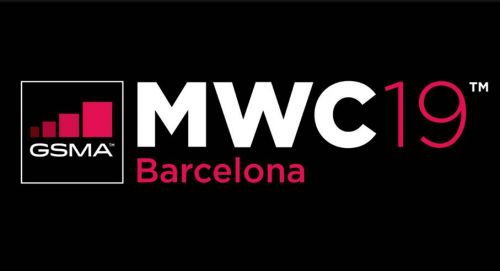
01/03/2019
Delegates of the Mobile World Congress discover the park
Delegates of the Mobile World Congress discover the park
The Mobile World Congress 2019 closed its doors yesterday in Barcelona with a new record of participation (109,000 visitors). It was focussed this year on the 5G technology and among all the initiatives presented in that field, let us highlight the joint initiative of Catalonia and the French cross-border region of Occitania, to prepare the application of the 5G Mediterranean corridor to the 5G European corridors that the European Union is setting up as priority projects.
The corridor would extend in Catalonia along the AP-7 motorway that runs through the Barcelona Synchrotron Park and beyond in France, so the motorway will be connected to 5G infrastructures and will allow driverless cars to circulate, thus being a unique test bed for the car of the future.
MWC 2019 has been an opportunity for the Barcelona Synchrotron Park to welcome in the synchrotron a delegation of 30 participants from different countries (Japan, China, Taiwan, Hong Kong, the Netherlands, Canada, Brazil) that came thanks to ACCIÓ, the Catalan government agency that promotes, among other things, the attractiveness of Catalonia abroad. They could discover the reality of the park and visit its icon, the Alba synchrotron, the largest research facility in south-western Europe that received last year 1,800 researchers from all over the world to carry out their investigations.
The corridor would extend in Catalonia along the AP-7 motorway that runs through the Barcelona Synchrotron Park and beyond in France, so the motorway will be connected to 5G infrastructures and will allow driverless cars to circulate, thus being a unique test bed for the car of the future.
MWC 2019 has been an opportunity for the Barcelona Synchrotron Park to welcome in the synchrotron a delegation of 30 participants from different countries (Japan, China, Taiwan, Hong Kong, the Netherlands, Canada, Brazil) that came thanks to ACCIÓ, the Catalan government agency that promotes, among other things, the attractiveness of Catalonia abroad. They could discover the reality of the park and visit its icon, the Alba synchrotron, the largest research facility in south-western Europe that received last year 1,800 researchers from all over the world to carry out their investigations.
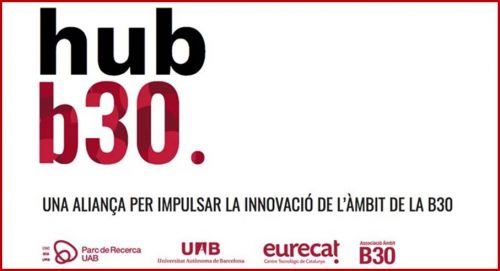
22/02/2019
Hub b30 takes off
Hub b30 takes off
The Barcelona Synchrotron Park (BSP) is a member of the Àmbit B30 association formed by companies, research centers, universities, business organizations, trade union organizations and governments of 23 municipalities in the Vallès Occidental, Vallès Oriental and Baix Llobregat districts, which aim to promote the so-called B30 territory that corresponds to the third Barcelona belt as it runs through these three districts where BSP is located.
This 48 km2 large territory (1.03 million inhabitants) is highly industrialized with 29,000 companies (300,000 jobs) and 195 industrial estates (6,600 hectares).
Last spring, on the joint initiative of the UAB University, the UAB Research Park (PRUAB), the Eurecat technology center and the Àmbit B30 Association, the Hub b30 platform was created to promote innovation in SMEs: Hub B30 detects companies’ challenges and needs and offers them appropriate solutions to improve their competitiveness.
The success of the first actions of the platform has led its initiators to sign an agreement to accelerate accessions to Hub b30 and develop new projects and activities related to innovation, dissemination of the activities, as well as debates and exchanges of experiences.
This 48 km2 large territory (1.03 million inhabitants) is highly industrialized with 29,000 companies (300,000 jobs) and 195 industrial estates (6,600 hectares).
Last spring, on the joint initiative of the UAB University, the UAB Research Park (PRUAB), the Eurecat technology center and the Àmbit B30 Association, the Hub b30 platform was created to promote innovation in SMEs: Hub B30 detects companies’ challenges and needs and offers them appropriate solutions to improve their competitiveness.
The success of the first actions of the platform has led its initiators to sign an agreement to accelerate accessions to Hub b30 and develop new projects and activities related to innovation, dissemination of the activities, as well as debates and exchanges of experiences.
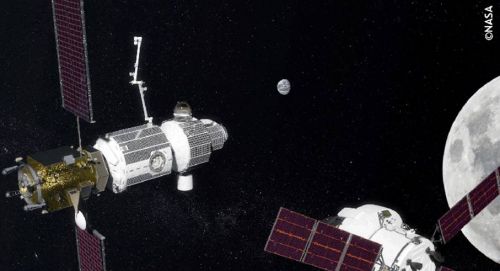
16/02/2019
SENER: wind, sun and moon
SENER: wind, sun and moon
Three recent news from SENER give an opportunity to talk about two important business sectors of the engineering and construction multinational company whose Catalan branch is headquartered in the Barcelona Synchrotron Park: the energy sector and the aerospace sector.
The thermo solar plant in Kathu (South Africa) with a 100 MW installed capacity, built by SENER and ACCIONA Industrial, came into commercial operation on last January 30. The plant incorporates a molten salt system that can store solar heat and generate electricity in the absence of solar radiation.
On the other hand, SENER has recently announced that the company will be involved in a large floating offshore wind farm currently under construction by COBRA 15 km off the Scottish coast of Aberdeen. SENER contribution includes, among other things, the supervision of the floating platforms manufacture and the technical feasibility analysis of the wind turbines assembly. With a 50 MW nominal power, this project is expected to be operational by 2020, making it the largest floating offshore wind farm in the world.
Last but not least, SENER has just been awarded five contracts for the development phase of a future space station in lunar orbit within the framework of the Gateway project called to become the next international space station whose construction is planned for the 2020s (see image).
Congratulations!
More information
The thermo solar plant in Kathu (South Africa) with a 100 MW installed capacity, built by SENER and ACCIONA Industrial, came into commercial operation on last January 30. The plant incorporates a molten salt system that can store solar heat and generate electricity in the absence of solar radiation.
On the other hand, SENER has recently announced that the company will be involved in a large floating offshore wind farm currently under construction by COBRA 15 km off the Scottish coast of Aberdeen. SENER contribution includes, among other things, the supervision of the floating platforms manufacture and the technical feasibility analysis of the wind turbines assembly. With a 50 MW nominal power, this project is expected to be operational by 2020, making it the largest floating offshore wind farm in the world.
Last but not least, SENER has just been awarded five contracts for the development phase of a future space station in lunar orbit within the framework of the Gateway project called to become the next international space station whose construction is planned for the 2020s (see image).
Congratulations!
More information









